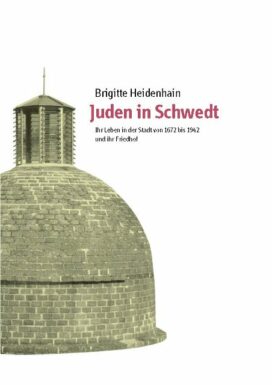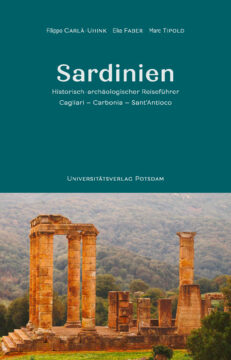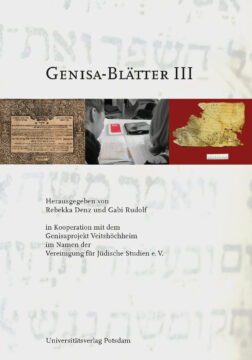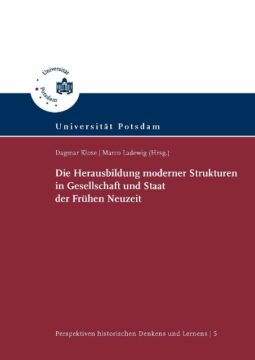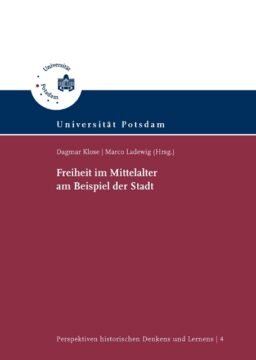For 270 years there was Jewish life in the Brandenburg town of Schwedt on the Oder. The reader of this volume participates in the changing history of the Jewish people and their community. The first Jew to settle in Schwedt in the 17th century was Bendix Levi. After his house in Oderberg burned down, Kurfürst Friedrich Wilhelm granted him permission to take up residence in Schwedt. The Prussian Kings wanted only few Jews to live in small Brandenburg towns, so during the 18th century the Jewish community in Schwedt consisted of only three families whose heads were Bendix Levi, Simon Salomon and Wulff Salomon. Their life was dominated by the fight for residency and trade permits. Solidarity amongst each other was not always self evident, since the residency permit of one was often in real or imagined conflict with a permit for others. The extensive sources in archives in Berlin, Brandenburg and Jerusalem show intensely the consequences of the restrictive Prussian “Judenpolitik” on the life of Jews in Schwedt and they also give us insight into Jewish traditions and customs. We bear witness to a Jewish oath in the townhouse of Schwedt and take part in the ceremonial signing of a marriage treaty. The “Emanzipationsedikt” of 1812 finally made Jews into Prussian citizens and simplified their life by giving them freedom of settlement and trade. This resulted in considerable growth of the Jewish community in Schwedt which was also joined by the Jewish residents of the nearby town of Vierraden. The first of these new settlers in Schwedt was David Loewenheim from Tütz / Westprussia. No less than seven families from his hometown followed. There was also immigration from other towns, increasing the number of Jewish residents in Schwedt to 200 by the late 19th century. After about 1880 the community shrank again because many moved away, particularly to Berlin. Since 1840 Schwedt was the seat of a Rabbi. Nathan Hirsch Kuttner stayed in Schwedt until his retirement in 1895. Although this long sojourn might indicate an agreeable relationship between him and his community, this was certainly not the case in his first years. Kuttner had to fight for recognition by his community and even had to obtain a court order to collect his salary. The building of a new Synagogue in 1862 gave a new sense of cooperation to the community and calmed the struggles with the Rabbi. Under the impression of increasing anti-Semitism from the late 19th into the 20th century, the community joined organizations which attempted to resist anti-Semitic attacks. For example, in 1894 it joined the “Deutsch- Israelitische Gemeindebund” and in 1901 the “Verein zur Abwehr des Antisemitismus”. In 1922 the “Reuchlin Loge”, was formed within the “Independent Order of Bnai Brith”. Soon followed the fast and complete anihilation of the Jewish community in Schwedt by the national socialist mass murder. The Central Database of Shoah Victims’ Names at Yad Vashem / Jerusalem preserves the memory of 71 murdered Jews of Schwedt who are known by name. Descendants of survivors are scattered to all parts of the world. Intensive genealogical research in cooperation with Peter Lowe from Hertford (UK), descendant of the Loewenheim family, and Yehuda Meinhardt (Israel), made it possible to reconstruct a number of family trees. The volume ends with a description of the Jewish cemetery and a record of the grave inscriptions. An entire documentation with photographs can be found in the Internet (www.uni-potsdam.de/juedische-friedhoefe).
Ihr Leben in der Stadt von 1672 bis 1942 und ihr Friedhof
ISBN: 978-3-86956-050-2
258 pages
Release year 2010
Series: Pri ha-Pardes , 7
12,00 €
Non-taxable transaction according to § 1 (1) UStG/VAT Act in combination with § 2 (3) UStG/VAT Act a. F. Providing this service, the University of Potsdam does not constitute a Betrieb gewerblicher Art/Commercial Institution according to § 1 (1) No. 6 or § 4 KStG/Corporate Tax Act. If the legal characterization of our business is changed to a commercial institution subsequently, we reserve the right to invoice VAT additionally. zzgl. Versandkosten
For 270 years there was Jewish life in the Brandenburg town of Schwedt on the Oder. The reader of this volume participates in the changing history of the Jewish people and their community. The first Jew to settle in Schwedt in the 17th century was Bendix Levi. After his house in Oderberg burned down, Kurfürst Friedrich Wilhelm granted him permission to take up residence in Schwedt. The Prussian Kings wanted only few Jews to live in small Brandenburg towns, so during the 18th century the Jewish community in Schwedt consisted of only three families whose heads were Bendix Levi, Simon Salomon and Wulff Salomon. Their life was dominated by the fight for residency and trade permits. Solidarity amongst each other was not always self evident, since the residency permit of one was often in real or imagined conflict with a permit for others. The extensive sources in archives in Berlin, Brandenburg and Jerusalem show intensely the consequences of the restrictive Prussian “Judenpolitik” on the life of Jews in Schwedt and they also give us insight into Jewish traditions and customs. We bear witness to a Jewish oath in the townhouse of Schwedt and take part in the ceremonial signing of a marriage treaty. The “Emanzipationsedikt” of 1812 finally made Jews into Prussian citizens and simplified their life by giving them freedom of settlement and trade. This resulted in considerable growth of the Jewish community in Schwedt which was also joined by the Jewish residents of the nearby town of Vierraden. The first of these new settlers in Schwedt was David Loewenheim from Tütz / Westprussia. No less than seven families from his hometown followed. There was also immigration from other towns, increasing the number of Jewish residents in Schwedt to 200 by the late 19th century. After about 1880 the community shrank again because many moved away, particularly to Berlin. Since 1840 Schwedt was the seat of a Rabbi. Nathan Hirsch Kuttner stayed in Schwedt until his retirement in 1895. Although this long sojourn might indicate an agreeable relationship between him and his community, this was certainly not the case in his first years. Kuttner had to fight for recognition by his community and even had to obtain a court order to collect his salary. The building of a new Synagogue in 1862 gave a new sense of cooperation to the community and calmed the struggles with the Rabbi. Under the impression of increasing anti-Semitism from the late 19th into the 20th century, the community joined organizations which attempted to resist anti-Semitic attacks. For example, in 1894 it joined the “Deutsch- Israelitische Gemeindebund” and in 1901 the “Verein zur Abwehr des Antisemitismus”. In 1922 the “Reuchlin Loge”, was formed within the “Independent Order of Bnai Brith”. Soon followed the fast and complete anihilation of the Jewish community in Schwedt by the national socialist mass murder. The Central Database of Shoah Victims’ Names at Yad Vashem / Jerusalem preserves the memory of 71 murdered Jews of Schwedt who are known by name. Descendants of survivors are scattered to all parts of the world. Intensive genealogical research in cooperation with Peter Lowe from Hertford (UK), descendant of the Loewenheim family, and Yehuda Meinhardt (Israel), made it possible to reconstruct a number of family trees. The volume ends with a description of the Jewish cemetery and a record of the grave inscriptions. An entire documentation with photographs can be found in the Internet (www.uni-potsdam.de/juedische-friedhoefe).
Recommended Books
-
 2023
2023Filippo Carlà-Uhink, Eike Faber, Marc Tipold, Karina Jung, Désiré Nahon, Tom Dera, Richard Schiffner, Moritz Radecke, Magnus Crone, Ricardo Rinne, Celina Otto, Sabeth Offergeld, Elisa Cazorla, Neele Chill, Nina Mindt
Sardinien
26,50 €Non-taxable transaction according to § 1 (1) UStG/VAT Act in combination with § 2 (3) UStG/VAT Act a. F. Providing this service, the University of Potsdam does not constitute a Betrieb gewerblicher Art/Commercial Institution according to § 1 (1) No. 6 or § 4 KStG/Corporate Tax Act. If the legal characterization of our business is changed to a commercial institution subsequently, we reserve the right to invoice VAT additionally.
zzgl. Versandkosten
Add to cart -
 2020
2020Rebekka Denz, Gabi Rudolf, Elisabeth Singer-Brehm, Monika Müller, Beate Weinhold, Stefanie Fuchs, Michael K. Schulz, Oliver Sowa, Lenka Uličná, Rebecca Ullrich
Genisa-Blätter III
9,50 €Non-taxable transaction according to § 1 (1) UStG/VAT Act in combination with § 2 (3) UStG/VAT Act a. F. Providing this service, the University of Potsdam does not constitute a Betrieb gewerblicher Art/Commercial Institution according to § 1 (1) No. 6 or § 4 KStG/Corporate Tax Act. If the legal characterization of our business is changed to a commercial institution subsequently, we reserve the right to invoice VAT additionally.
zzgl. Versandkosten
Add to cart -
 2010
2010Die Herausbildung moderner Strukturen in Gesellschaft und Staat der Frühen Neuzeit
22,50 €Non-taxable transaction according to § 1 (1) UStG/VAT Act in combination with § 2 (3) UStG/VAT Act a. F. Providing this service, the University of Potsdam does not constitute a Betrieb gewerblicher Art/Commercial Institution according to § 1 (1) No. 6 or § 4 KStG/Corporate Tax Act. If the legal characterization of our business is changed to a commercial institution subsequently, we reserve the right to invoice VAT additionally.
zzgl. Versandkosten
Add to cart -
 2009
2009Freiheit im Mittelalter am Beispiel der Stadt
13,50 €Non-taxable transaction according to § 1 (1) UStG/VAT Act in combination with § 2 (3) UStG/VAT Act a. F. Providing this service, the University of Potsdam does not constitute a Betrieb gewerblicher Art/Commercial Institution according to § 1 (1) No. 6 or § 4 KStG/Corporate Tax Act. If the legal characterization of our business is changed to a commercial institution subsequently, we reserve the right to invoice VAT additionally.
zzgl. Versandkosten
Add to cart
Publisher Info
Contact
Potsdam University Library
University Press
Am Neuen Palais 10
14476 Potsdam
Germany
verlag@uni-potsdam.de
0331 977-2094
0331 977-2292

